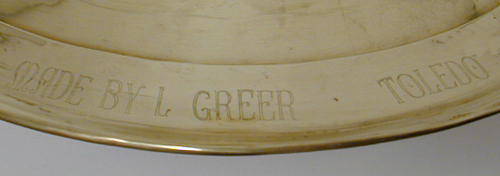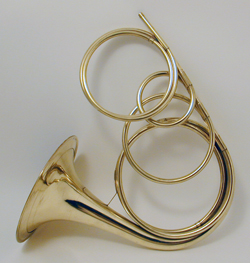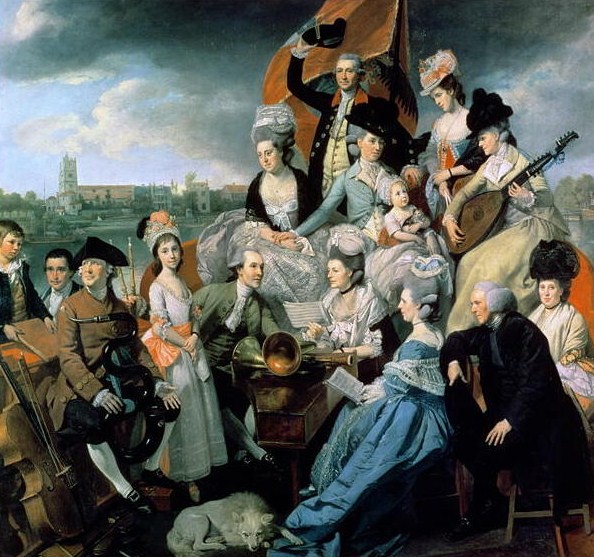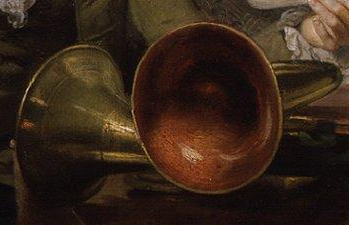| Label :
|
MADE BY L. GREER TOLEDO |
|
Model:
|
Hofmaster |
|
Serial Number:
|
none |
|
Date of Manufacture:
|
2003 |
|
Key(s):
|
G, F, E, E♭, D, C, B, B♭
(A=440 or 415) |
|
Valves:
|
none |
|
Bore:
|
1.11 cm (I.D. of crook tenon) |
|
Bell Flare:
|
garland |
| 5.5 cm. |
|
|
Bell Diameter:
|
25.8 |
|
Base Metal:
|
yellow brass with nickel-silver trim |
|
Finish:
|
unlacquered |
| . (click on photos for larger view) |
|
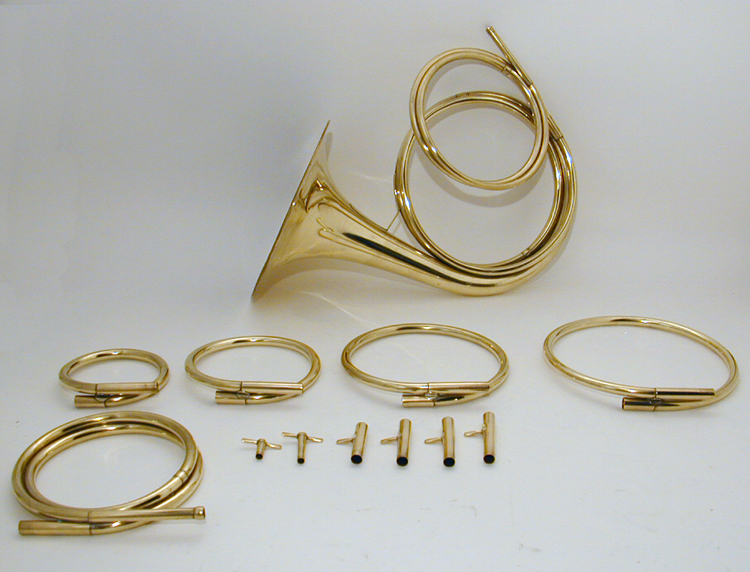 |
|
This is a magnificent copy made by Dr. Lowell Greer of a baroque orchestral horn by John Christopher Hofmaster, London. It is constructed to be played with the bell held to the player’s left while a mirror-image companion horn would be held with the bell the right. It was fashionable in the baroque period for two players to play with their bells facing one another (see ilustration from an eighteenth century horn tutor, below). The horn is complete with corpus, 2 master crooks (baroque and modern pitch), 5 couplers, and various tuning bits. |
|
| |
|
